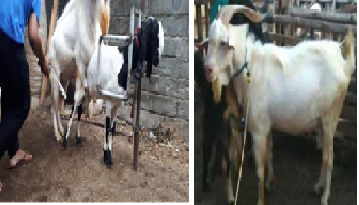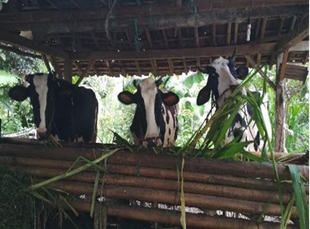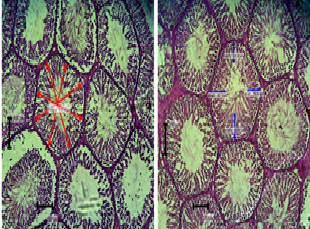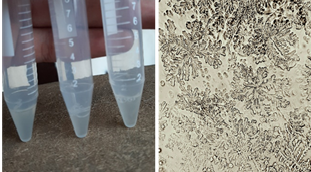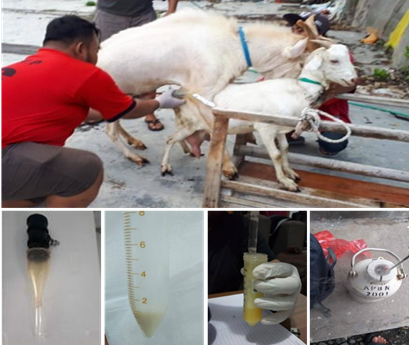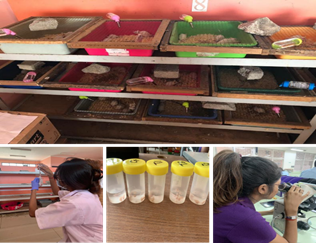Partial albinism in Hawksbill turtle (Eretmochelys imbricata) in Rio Grande do Norte, Brazil

Downloads
Albinism is a genetic disorder in which there is a defect in melanin production, a pigment which gives color to the skin, hair and eyes. This congenital malformation can also occur in sea turtles, although it is not fatal, but it reduces their chances of survival in the natural environment. Even so, there are still no reports of its occurrence in Eretmochelys imbricata, a species known as the hawksbill turtle or legitimate turtle, with wide distribution in tropical seas. The present study describes the case of an individual with partial albinism in the E. imbricata species, found on the northern coast of Rio Grande do Norte, Brazil. The animals were collected at Cabo de Sí£o Roque beach in January 2020 during the reproductive season of the species. After analyzing the animal, it can be classified as having partial piebald albinism, since it still has lighter spots both on the skin and in the carapace and plastron regions.
Acevedo J, Torres D, Aguayo-Lobo A. 2008. Rare piebald and partially leucistic Antarctic fur seals, Arctocephalus gazella, at Cape Shirreff, Livingston Island, Antarctica. Polar Biol. 32: 41-5.
Al-Mukhaini N, Ba-Omar TA, Mahmoud IY, Al-barwani S. 2010. Embryonic staging of the Green Turtle, Chelonia mydas (Linnaeus, 1758). Zool Middle East 51: 39-50.
Bakos RM, Argenziano G, Zalaudek I, Masiero NCMS, Zoratto G, Cartell A, Bakos L. 2009. Dermatoscopy of pigmented melanocytic nevi in patients with oculocutaneous albinism. J Am Acad Dermatol. 60: 487-9.
Berdeen JB, Otis AL. 2011. An observation of a partially albinistic Zenaida macroura (mourning dove). Southeast Nat. 10: 185-8.
Cañón S, Orozco CI. 2004. Anormalidades encontradas en nidadas transladadas de tortugas marina Gogó (Caretta caretta) y Carey (Eretmochelys imbricata) de las playas de la vertiente norte de la Sierra Nevada de Santa Marta, departamento del Magdalena, en la temporada de desove del 2001. Trabajo de grado, Universidad de Bogotá Jorge Tadeo Lozano, Santa Marta, CO.
Castillo JS, Melendez EM, Garayzar CV. 2006. New records of albinism in two elasmobranchs: the tiger shark, Galeocerdo cuvier and the giant electric ray, Narcine entemedor. Cybium 30: 191-2.
Dodd CK. 1988. Synopsis of the biological data on the loggerhead sea turtle Caretta caretta (Linnaeus 1758). U.S. Fish and Wildlife Service. Biological Report 88.
Drennen DJ. 1990. Occurrence of physical abnormalities in Caretta caretta at Hobe Sound National Wildlife Refuge, 1987 and 1988. Mar Turt Newsl. 48:19-20.
Forrest SC, Naveen R. 2000. Prevalence of leucism in pygocelid penguins of the Antarctic Peninsula. Waterbirds 23: 283-5.
Godfrey MH, Mrosovsky N. 1995. Comment on albino sea turtle hatchlings in Brazil. Mar Turt Newsl. 69: 10-1.
Griffiths AJF, Miller JH, Suzuki DT, Lewontin RC, Gelbart WM. 1998. Introduçí£o í Genética. 6th Ed. Guanabara Koogan. Rio de Janeiro, Brasil.
Harless M, Morlock H. 1989. Turtles: Perspectives and Research. Krieger Publishing Company. Inc. Malabar, Florida.
Hiller I. 1983. Albinos. Young naturalist. The Louise Lindsey Merrick Texas environment series No. 6. Texas Parks and Wildlife Department. Texas A&M University Press, College Station. 28-31.
Ibarra AB, Gasca AM. 2009 Malformaciones en embriones y neonatos de tortuga golfina (Lepidochelys olivacea) en Nuevo Vallarta, Nayarit, México. Vet Méx. 40: 371-80.
IUCN. 2022. Red list for threatened species. https://www.iucnredlist.org/species/8005/12881238#geographic-range.11 de fevereiro de 2022.
Kaska Y, Downie R. 1999. Embryological development of sea turtles (Chelonia mydas, Caretta caretta) in the Mediterranean. Zool. Middle East 19: 55-69.
Moura CCM, Guimarí£es ES, de Moura GJB, do Amaral GJA, Silva AC. 2012. Spatio-temporal distribution and reproductive success of Eretmochelys imbricata on the beaches of Ipojuca, Pernambuco, Brazil. Iheringi 102: 254-60. (Article in Portuguese).
Rishi P, Trivedi M, Sreelakshmi K. 2020. Choroidal nevus and melanoma in patients with oculocutaneous albinism. Ocul Oncol Pathol. 6: 31-4.
Santos AJB, Bellini C, Vieira DHG, Neto LD, Corso G. 2013. Northeast Brazil shows highest hawksbill turtle nesting density in the South Atlantic. Endangered Species Research 21: 25-32.
Copyright (c) 2022 Emanuel Lucas Bezerra Rocha, Lucas Gabriel Verissimo Pinheiro da Silva, Isadora Nathalia Rocha Barreto, Julio Alejandro Navoni, Hélio Noberto de Araújo Júnior, Moacir Franco de Oliveira, Carlos Eduardo Bezerra de Moura

This work is licensed under a Creative Commons Attribution-ShareAlike 4.0 International License.
Ovozoa by Unair is licensed under a Creative Commons Attribution-ShareAlike 4.0 International License.
1. The journal allows the author to hold the copyright of the article without restrictions.
2. The journal allows the author(s) to retain publishing rights without restrictions
3. The legal formal aspect of journal publication accessibility refers to Creative Commons Attribution Share-Alike (CC BY-SA).
4. The Creative Commons Attribution Share-Alike (CC BY-SA) license allows re-distribution and re-use of a licensed work on the conditions that the creator is appropriately credited and that any derivative work is made available under "the same, similar or a compatible license”. Other than the conditions mentioned above, the editorial board is not responsible for copyright violation.





























